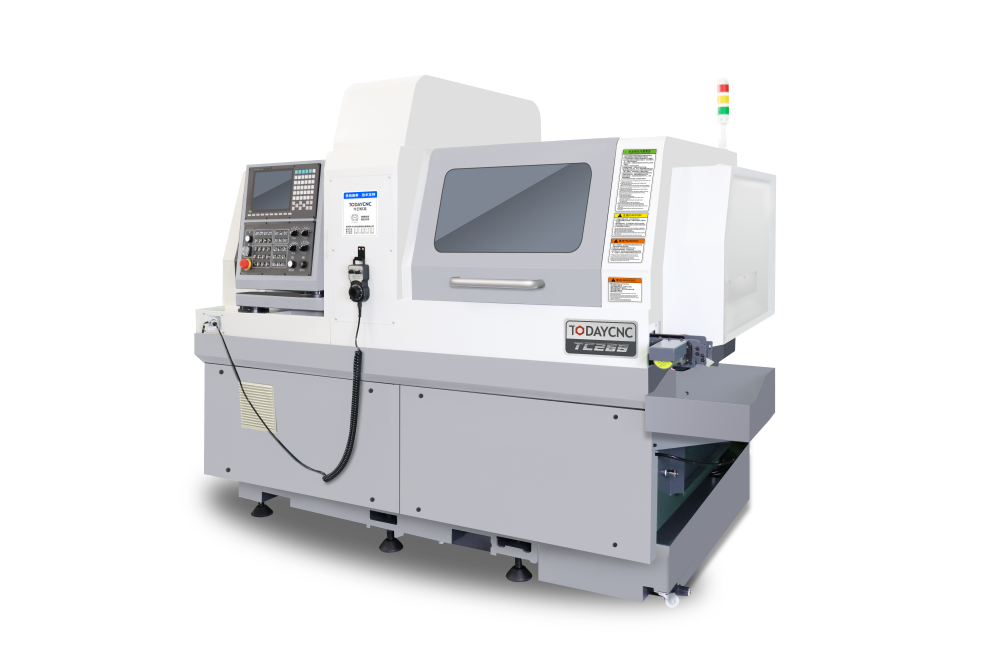Unlocking Precision: The Advantages of High-End CNC Lathes in Modern Manufacturing
Unlocking Precision: The Advantages of High-End CNC Lathes in Modern Manufacturing
Table of Contents
- 1. Introduction to CNC Lathes
- 2. What Are CNC Lathes?
- 3. Advantages of High-End CNC Lathes
- 3.1 Precision Engineering
- 3.2 Enhanced Efficiency
- 3.3 Versatility in Manufacturing
- 3.4 Long-term Cost Effectiveness
- 4. Advanced Features of High-End CNC Lathes
- 5. Industry Applications of High-End CNC Lathes
- 6. Choosing the Right High-End CNC Lathe
- 7. Frequently Asked Questions
- 8. Conclusion
1. Introduction to CNC Lathes
In the ever-evolving landscape of manufacturing, **high-end CNC lathes** have emerged as a cornerstone of precision engineering. These machines are not merely tools; they are pivotal in shaping the future of production processes. Their ability to create intricate designs with unparalleled accuracy makes them indispensable in various industries. In this article, we will explore the numerous advantages that high-end CNC lathes offer, from enhanced precision to cost savings, and how they can transform your manufacturing capabilities.
2. What Are CNC Lathes?
**CNC lathes**, or Computer Numerical Control lathes, are automated machines that execute a sequence of operations based on pre-programmed computer software. Unlike traditional lathes that require manual operation, CNC lathes can produce consistent, repeatable parts with exceptional quality. These machines use various cutting tools to shape and manipulate materials, including metals, plastics, and composite materials.
The development of **CNC technology** has revolutionized how manufacturers approach production, improving accuracy and allowing for complex designs that were previously impossible. As industries demand greater precision and efficiency, the role of high-end CNC lathes becomes increasingly significant.
3. Advantages of High-End CNC Lathes
High-end CNC lathes offer several advantages over standard models, making them a worthy investment for any manufacturing operation. Let's delve into the key benefits.
3.1 Precision Engineering
One of the most notable advantages of high-end CNC lathes is their **precision engineering capabilities**. These machines utilize advanced technology to ensure that every cut is made with meticulous accuracy. This level of precision results in parts that meet stringent manufacturing tolerances, reducing the need for rework and waste.
The **high-resolution feedback systems** in high-end CNC lathes allow for real-time monitoring and adjustments, ensuring that the output consistently meets the desired specifications. This level of accuracy is vital for industries such as aerospace, automotive, and medical manufacturing, where even the slightest deviation can have serious implications.
3.2 Enhanced Efficiency
High-end CNC lathes are designed for maximum efficiency. The automation provided by CNC technology minimizes the time required for setup, operation, and monitoring. This translates to shorter lead times and faster production cycles, enabling manufacturers to respond swiftly to market demands.
Furthermore, the ability to run multiple jobs simultaneously on a single machine allows for better resource utilization. High-end CNC lathes can handle complex tasks, reducing the need for multiple machines and minimizing floor space.
3.3 Versatility in Manufacturing
Versatility is another critical advantage of high-end CNC lathes. These machines can work with a wide range of materials and can be configured to perform various operations, including turning, milling, drilling, and threading. This adaptability makes them suitable for various applications, from producing small components to large-scale manufacturing runs.
Manufacturers can easily switch between jobs with minimal downtime, ensuring that they can meet diverse customer needs without investing in multiple machines.
3.4 Long-term Cost Effectiveness
While the initial investment in high-end CNC lathes may be significant, the long-term cost savings can be substantial. The precision and efficiency of these machines lead to reduced material waste, lower labor costs, and decreased rework rates. As a result, manufacturers experience a quicker return on investment.
Additionally, high-end CNC lathes often come with reduced maintenance needs, further contributing to overall cost savings. Investing in quality machinery translates into fewer operational disruptions and increased productivity.
4. Advanced Features of High-End CNC Lathes
High-end CNC lathes come equipped with various advanced features that enhance their functionality and usability. Understanding these features can help manufacturers make informed decisions when investing in CNC machinery.
4.1 Automation and Smart Technology
The integration of **automation and smart technology** in high-end CNC lathes is a game-changer for the manufacturing sector. These machines can execute complex tasks autonomously, allowing operators to focus on higher-level activities. Features such as predictive maintenance and real-time monitoring enhance operational efficiency and reduce downtime.
Smart technology also enables manufacturers to collect valuable data from the machining process, allowing for continuous improvement and optimization. This information can be leveraged to refine production techniques and enhance overall performance.
4.2 Software Integration
High-end CNC lathes often include advanced software packages that facilitate seamless integration into existing manufacturing processes. These software solutions enable efficient programming, simulation, and monitoring of CNC operations. User-friendly interfaces make it simpler for operators to create and modify programs, reducing the learning curve associated with new machines.
Additionally, the ability to integrate with other manufacturing technologies, such as CAD/CAM systems, provides a comprehensive solution for product development and production.
5. Industry Applications of High-End CNC Lathes
High-end CNC lathes are employed across various industries due to their precision and versatility. Here are some key applications:
- **Aerospace Engineering:** In the aerospace sector, the production of components requires the utmost precision. High-end CNC lathes ensure that critical parts meet the stringent safety and performance standards required in aviation.
- **Automotive Manufacturing:** The automotive industry relies on CNC lathes for producing intricate engine components, gears, and other parts that demand high accuracy.
- **Medical Manufacturing:** The medical field requires components such as surgical instruments and implants to be produced with exact specifications. High-end CNC lathes offer the precision necessary for these applications.
- **Electronics:** From connectors to casings, the electronics industry benefits from the precision engineering capabilities of high-end CNC lathes.
6. Choosing the Right High-End CNC Lathe
Selecting the appropriate high-end CNC lathe for your manufacturing needs involves considering several factors:
- **Material Compatibility:** Ensure that the machine can handle the materials you intend to work with, whether metals, plastics, or composites.
- **Size and Capacity:** Evaluate the size of the components you will be producing and choose a lathe with the appropriate capacity.
- **Technology Features:** Look for machines equipped with the latest technology, including automation, software integration, and advanced feedback systems.
- **Support and Service:** Consider the manufacturer's support services, warranties, and available training programs for operators.
7. Frequently Asked Questions
What is the primary advantage of CNC lathes over traditional lathes?
The primary advantage of CNC lathes is their ability to produce parts with high precision and repeatability, significantly reducing the likelihood of errors compared to traditional manual lathes.
Are high-end CNC lathes suitable for small production runs?
Yes, high-end CNC lathes are versatile and can efficiently handle both small and large production runs, making them suitable for various manufacturing needs.
How do high-end CNC lathes improve production efficiency?
High-end CNC lathes reduce setup time, automate repetitive tasks, and allow for simultaneous job processing, all contributing to enhanced production efficiency.
What industries benefit the most from high-end CNC lathes?
Industries such as aerospace, automotive, medical manufacturing, and electronics gain significant benefits from the precision and versatility offered by high-end CNC lathes.
What factors should be considered when investing in a high-end CNC lathe?
Key factors include material compatibility, machine capacity, advanced features, and support services from the manufacturer.
8. Conclusion
High-end CNC lathes represent a significant advancement in manufacturing technology, offering unparalleled precision, efficiency, and versatility. As industries continue to demand higher quality and faster production times, investing in high-end CNC lathes becomes crucial for maintaining a competitive edge. By understanding the advantages and features of these machines, manufacturers can make informed decisions that will enhance their production capabilities and drive growth. As we move forward in this technological age, embracing high-end CNC technology is not just beneficial; it is essential for success in the modern manufacturing landscape.
Related Blog














